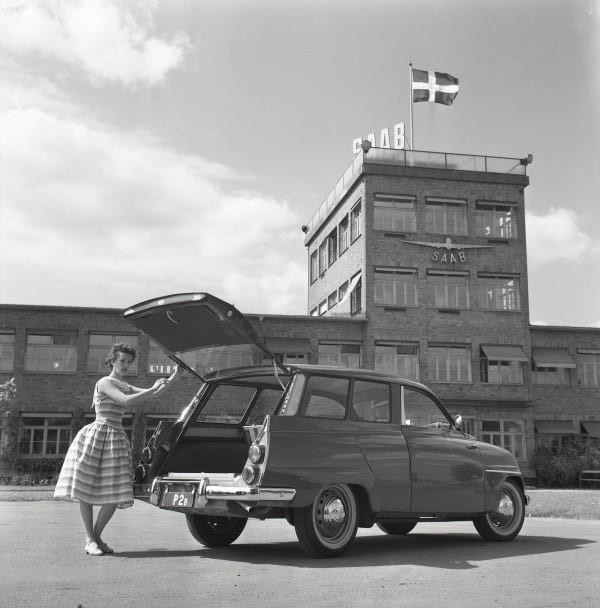Saab, a name synonymous with Swedish engineering and innovation, is often associated with its iconic motor cars. While Saab Automobile ceased production in 2011, the legacy of Saab Motor Cars continues to fascinate automotive enthusiasts. This article delves into the history of Saab motor cars, exploring their design influences, significant models, and the eventual demise of the automobile division.
Saab’s journey began in 1937 as an aircraft manufacturer, Svenska Aeroplan Aktiebolaget (Swedish Aeroplane Company), established to bolster Sweden’s air force amidst growing tensions in Europe. In the post-World War II era, Saab diversified its operations, venturing into the automotive industry with Project 92, which ultimately led to the birth of Saab motor cars.
From Aircraft to Automobiles: Saab’s Design Philosophy
Saab’s expertise in aeronautical engineering heavily influenced the design of its motor cars. Engineers leveraged their knowledge of aerodynamics to create vehicles with exceptional performance and handling. The first Saab car, unveiled in 1947, showcased a distinctive aerodynamic profile, setting the stage for future models that would become renowned for their sleek and functional designs.
 Saab 92: The first Saab car produced.
Saab 92: The first Saab car produced.
The Saab 92, the first production model, entered the market in 1949, featuring a unique two-stroke engine and front-wheel drive. Subsequent models, such as the Saab 93, 95, 96, and 99, further solidified Saab’s reputation for innovation and safety, introducing features like seatbelts as standard equipment and turbocharged engines. These Saab motor cars became symbols of Swedish design and engineering prowess, capturing a loyal following worldwide.
The End of an Era: The Decline of Saab Motor Cars
Despite its innovative designs and dedicated fanbase, Saab Automobile faced numerous challenges. A merger with Scania-Vabis in 1968, followed by a partnership with General Motors in 1989, ultimately led to Saab becoming a wholly-owned subsidiary of the American automaker in 2000. However, financial difficulties within General Motors impacted Saab, and despite a brief ownership change to Spyker Cars, Saab Automobile filed for bankruptcy in 2011.
The demise of Saab motor cars marked the end of an era for the Swedish automotive industry. However, the legacy of Saab motor cars, with their distinctive designs, innovative features, and focus on safety, continues to inspire and influence automotive enthusiasts and designers today.
Saab Today: Focusing on Defense and Security
While Saab motor cars are no longer in production, the parent company, Saab AB, remains a prominent player in the global defense and security industry. Saab continues to develop advanced technologies and solutions for air, land, and naval defense, as well as civil security applications.
The company’s commitment to innovation and engineering excellence, honed through decades of experience in both the automotive and defense sectors, ensures that the Saab name remains synonymous with cutting-edge technology and Swedish ingenuity. While the chapter on Saab motor cars has closed, the Saab story continues, driven by a legacy of innovation and a commitment to shaping the future.
